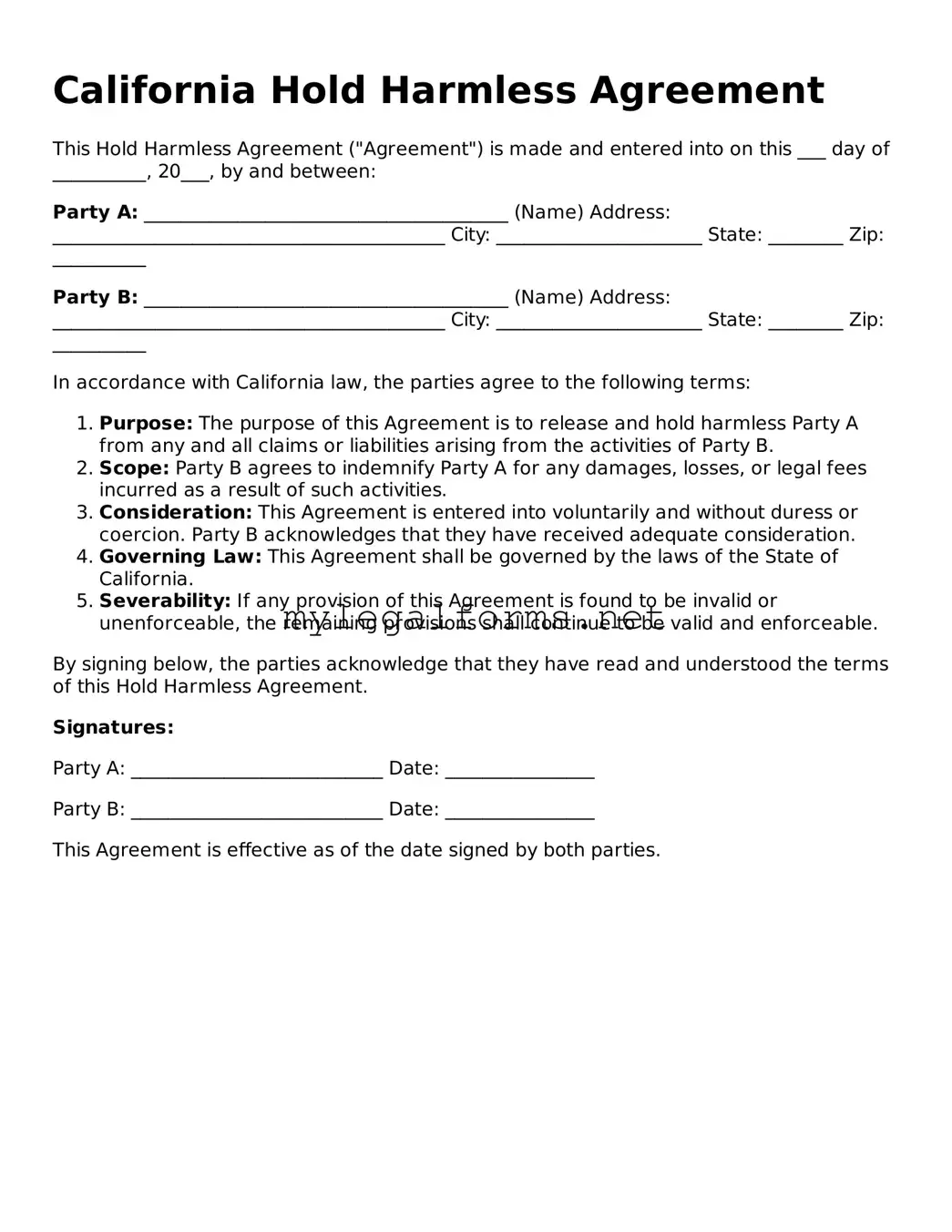California Hold Harmless Agreement
This Hold Harmless Agreement ("Agreement") is made and entered into on this ___ day of __________, 20___, by and between:
Party A: _______________________________________ (Name)
Address: __________________________________________
City: ______________________ State: ________ Zip: __________
Party B: _______________________________________ (Name)
Address: __________________________________________
City: ______________________ State: ________ Zip: __________
In accordance with California law, the parties agree to the following terms:
- Purpose: The purpose of this Agreement is to release and hold harmless Party A from any and all claims or liabilities arising from the activities of Party B.
- Scope: Party B agrees to indemnify Party A for any damages, losses, or legal fees incurred as a result of such activities.
- Consideration: This Agreement is entered into voluntarily and without duress or coercion. Party B acknowledges that they have received adequate consideration.
- Governing Law: This Agreement shall be governed by the laws of the State of California.
- Severability: If any provision of this Agreement is found to be invalid or unenforceable, the remaining provisions shall continue to be valid and enforceable.
By signing below, the parties acknowledge that they have read and understood the terms of this Hold Harmless Agreement.
Signatures:
Party A: ___________________________ Date: ________________
Party B: ___________________________ Date: ________________
This Agreement is effective as of the date signed by both parties.
